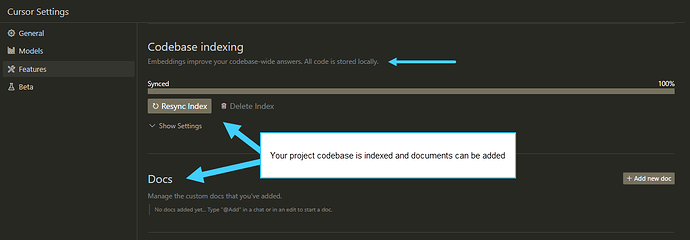Hello,
I just thought I would share some text and annotated screenshots I have recently used when telling colleagues about Cursor.
I find documenting things is a good way to learn them quickly.
I only started using Cursor last weekend, and I normally use Sublime Text, so it is all very new to me at the moment.
But I thought I would share these resources in case it saves you some time when telling your colleagues about it.
The official ‘features’ page is here:
https://www.cursor.com/features
Contents
This post covers these features:
Editor Functionality
Ctrl+K- Code autocompletion across multiple lines
- Predictive coding that suggests what changes you are going to make next
Chat Panel Functionality
Ctrl+L:
- Language Model
- Mentions
- Image
- No Context
- Current File as Context
- Codebase as Context
- Interpreter Mode
Terminal Functionality
Ctrl+Kin the terminal
Composer - Multi File Editing Functionality
Ctrl+I
Codebase Indexing
Editor Functionality
This functionality is evoked within the code editor area of Cursor:
Ctrl+K:
-
Without any code highlighted, enter a prompt and it will generate code that you can accept, reject or modify.
-
With code highlighted, enter a prompt such as ‘what does this code do?’ or ‘refactor this code’ and then accept, reject or modify the generated code.
-
Code autocompletion across multiple lines.
-
Predictive coding that suggests what changes you are going to make next.
Chat Panel Functionality
This functionality is evoked in the chat panel next to the code editor area:
Ctrl+L:
Enter any prompt and choose the following options:
Language Model:
- GPT 4o
- GPT 3.5
- Claude 3.5 Sonnet
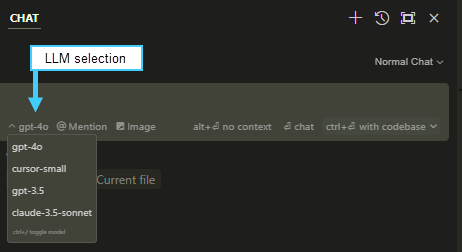
Mentions:
You can type @ and then select different entities to pass through as context:
- Files
- Folders
- Code
- Websites
- Docs
- Git
- Codebase

Image:
You can add an image to your prompt.

No Context:
You can pass through no context with your prompt.

Current File as Context:
By default, the current open file will be passed through as context.
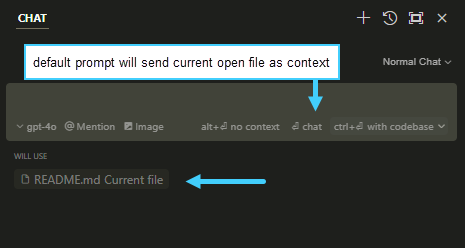
Codebase as Context:
You can add the entire codebase as context to your prompt.
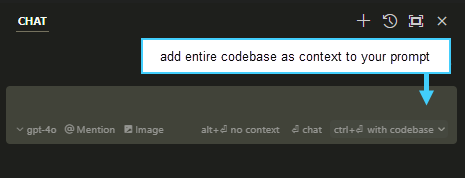
Interpreter Mode:
You can choose to convert your prompt to executable Python code.
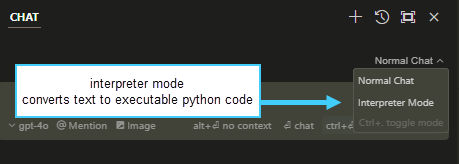
Terminal Functionality
- You can also run
Ctrl+Kin the terminal.
This will convert natural language prompts to terminal commands.

Composer - Multi File Editing Functionality
Ctrl+I:
Tag multiple files and add natural language instructions.
Edits will be suggested across multiple files and you can accept/reject all or per file.
Codebase Indexing
Related Videos
I watched a lot of videos when researching AI assistants, here is a selection of them:
ALL ROADS LEAD to AI CODING: Cursor, Aider in the browser, Multi file Prompting
(20 mins, IndyDevDan)
GPT-5 is coming: 3 ways to prepare for a 100x improvement in SOTA LLMs
(16 mins, IndyDevDan)
Cursor - an AI-powered VSCode fork
(12 mins, Jeffrey Codes)
Cursor IDE deep dive and why it is the best tool for coding
(26 mins, echohive)
Cursor - The AI-first Code Editor
(8 mins, AI Tube)
Claude 3.5 and aider: Use AI Assistants to Build AI Apps
(23 mins, Coding the Future With AI)
How to use Interpreter Mode and Terminal Commands in Cursor
(5 mins, echohive)
Aider : the production ready AI coding assistant you’ve been waiting for
(24 mins, Learn Code With JV)




